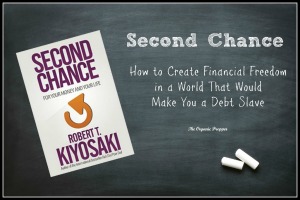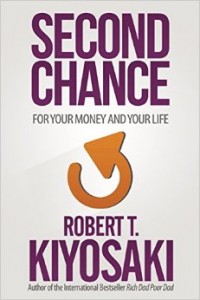 We are living through a time that will go down in the history books as one of epic economic turmoil. Instead of three economic groups (Rich, Middle Class, and Poor) we are quickly dividing into two groups: richer and poorer. If you dutifully go to work and punch the clock, then come home and pay your bills, you’ll end up with little to show for it but indentured servitude to “the system.” If your kids go into debt to attend college, they will very likely come out unable to find a job that will allow them to do more than pay off their student loans. “Success” is becoming as ephemeral as fog for people those who play the game of life by the former rules. It’s time to change your strategy to emphasize creating cash flow over savings if you want to weather this crisis.
We are living through a time that will go down in the history books as one of epic economic turmoil. Instead of three economic groups (Rich, Middle Class, and Poor) we are quickly dividing into two groups: richer and poorer. If you dutifully go to work and punch the clock, then come home and pay your bills, you’ll end up with little to show for it but indentured servitude to “the system.” If your kids go into debt to attend college, they will very likely come out unable to find a job that will allow them to do more than pay off their student loans. “Success” is becoming as ephemeral as fog for people those who play the game of life by the former rules. It’s time to change your strategy to emphasize creating cash flow over savings if you want to weather this crisis.
A recently published real estate report showed exactly how true this is:
“Since 2000, 95 percent of new households in King County have been either rich or poor. A mere 5 percent could be considered middle income.”
That is a statistic reportedly true of Seattle – the heart of King County in Washington state – but which may well be a window into what is happening across much of the rest of the country.
The economy of our country is spinning out of control, and things that once were practical and sensible courses of action are now the surest course to poverty, debt slavery, and personal economic collapse. The middle class is dying, leaving only the rich and the poor, and the financial decisions you make now will determine which group you fall into as the situation in our country becomes more chaotic and divisive.
This change in the economic landscape certainly calls for a change in personal economic strategies. Robert Kiyosaki’s new book Second Chance is a guide to understanding how the past will shape the future and how you can use Information Age tools and insights to create a fresh start. This book is a guide to facing head-on the dangers of the crises around us – and steps and tips for seizing the opportunities they present.
Robert Kiyasaki’s Personal Finance Advice for the Truly Informed
 Leaving your money in the banks, saving dollars, and seeking the security of a steady 9-5 job are all themes I’ve touched on in previous articles. When I was contacted by the Rich Dad company and asked to take a look at the new book, I was delighted, since his perspective is almost always the opposite of “standard financial wisdom”. I wasn’t disappointed. In a very readable book full of personal anecdotes, easy-to-understand charts and graphics, and clear advice, Kiyosaki takes his unique experiences as an entrepreneur and uses them to guide the rest of us through the murky game of sleight-of-hand being perpetrated by the government. Rarely does a book point the finger of blame for our financial ruin so directly towards the US government and the robber barons it supports., dropping names like Rothschild, Rockefeller, and Carnegie.
Leaving your money in the banks, saving dollars, and seeking the security of a steady 9-5 job are all themes I’ve touched on in previous articles. When I was contacted by the Rich Dad company and asked to take a look at the new book, I was delighted, since his perspective is almost always the opposite of “standard financial wisdom”. I wasn’t disappointed. In a very readable book full of personal anecdotes, easy-to-understand charts and graphics, and clear advice, Kiyosaki takes his unique experiences as an entrepreneur and uses them to guide the rest of us through the murky game of sleight-of-hand being perpetrated by the government. Rarely does a book point the finger of blame for our financial ruin so directly towards the US government and the robber barons it supports., dropping names like Rothschild, Rockefeller, and Carnegie.
Personally, I’ve made many changes since I was laid off from my job in the automotive industry many years ago. Losing that job, although it was terrifying at the time, was probably the best thing that could have happened to me. Getting off of that corporate hamster wheel allowed me to focus on the things in life that are truly important to me: my family, our health, and our long-term well-being. I get to spend my days researching, writing, and providing information about all of these things to other people who have the same priorities. A recurring theme in the book Second Chance is that of making the world a better place. If you could do something all day long that helped others, what would it be?
While all of the advice in the book won’t be applicable to all of the people who read it, I felt I was definitely able to nod in agreement and take some lessons from it. For example:
- Our current financial crisis was deliberately manufactured to make the rich richer
- Don’t put your money in a savings account: this only benefits the bank.
- The education system is simply a training ground for future debt slaves
- Learn how to build wealth in tangible assets, as opposed to dollars.
- Learn how to create passive income. (This doesn’t require you to be a self-made millionaire; it’s actually achievable for everyday people.)
- Learn how to play the game of assets to reduce the amount of money you pay in taxes, just like the wealthy corporations do.
At the same time, there was one point I disagreed with. It seems that the author isn’t a huge fan of the frugal lifestyle to which most of us adhere. I think by combining simplicity and personal thrift with the financial premises of the book, nearly anyone can achieve a greater financial freedom that will allow them to weather the current economy with aplomb.
The take-home message is this: Right now, it’s a time of opportunity. Your awareness of those who pull the strings can enable you to look at the history lesson presented in Kiyosaki’s book and predict the future. You can take steps to avoid being shuttled along with the rest of the herd into that grim place.
Robert Kiyosaki’s new book, Second Chance…for Your Money and Your Life,uses the lessons from the past and a brutal assessment of the present to prepare readers to see—–and seize–—the future.
If readers can train their minds to see what their eyes cannot, in a world that is becoming increasingly more ‘invisible’ and moving at a high rate of speed, they can have a second chance at creating the life they’ve always wanted. (Amazon)
Second Chance: for Your Money, Your Life and Our World
If you’d like to look at the past and see how we got into this mess, look at your present to see if you are living as an indentured servant, or look at the future to see where you want to be, this is the book for you. Don’t just take my word for it – take a look at the excellent reviews for Second Chance. You may not be able to use every lesson, but I’m positive you’ll find plenty that will benefit you.
I’d like to give a big shout-out to The Rich Dad company for sponsoring this relevant post and providing me with a copy of the book to review.
